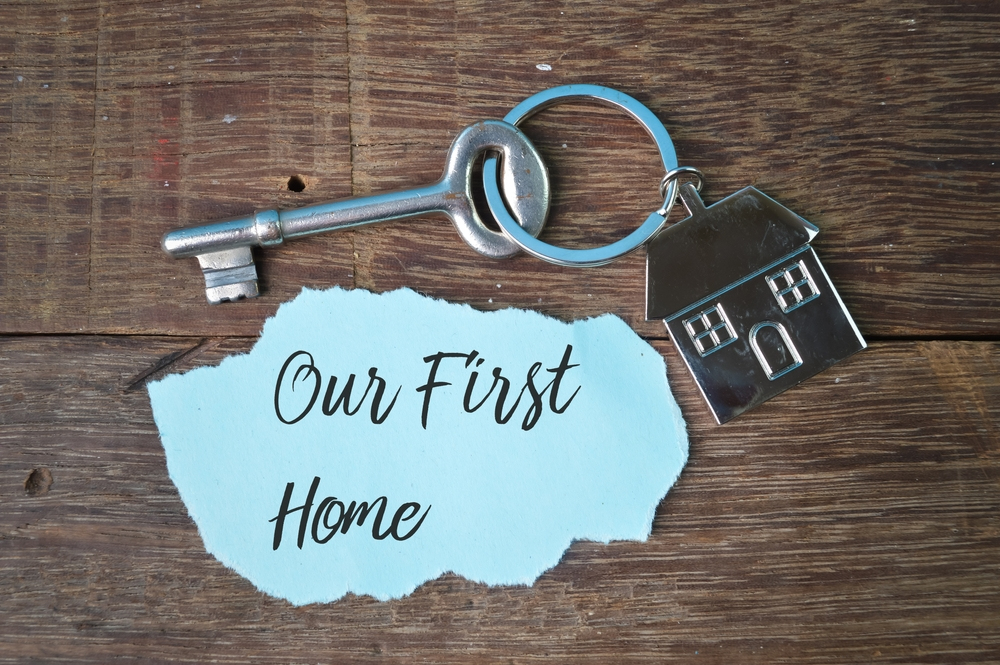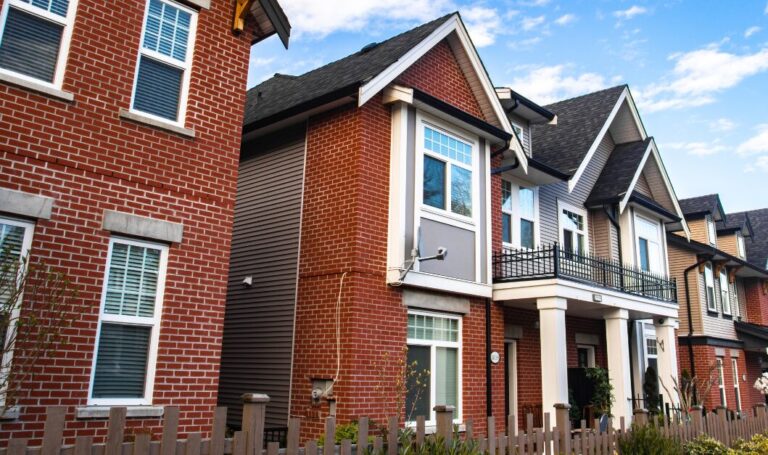For many first-time buyers, getting a foot on the property ladder can feel out of reach.
But there is help available for first timers, including through Help to Buy equity loans.
And while Help to Buy is set to end in March 2023, several government first-time buyer schemes remain, alongside stamp duty relief.
“First-time buyer property prices have risen from £142,473 in 2010 to £241,025 today,” says Rob Smith, Managing Director of Whitegates.
“Despite this, the average age of a first-time buyer has remained at 31 for the past 15 years.”
In this guide, we outline all the help available to first-time buyers, including details on Help to Buy, when it ends and what you need to do to beat the deadline.
What help is there for first-time buyers?
Several government schemes are available to help first-time buyers purchase their first home, including:
- Help to Buy equity loans
- The First Homes scheme
- Shared Ownership
- The mortgage guarantee scheme
- The Lifetime ISA
- Stamp duty relief
What is a Help to Buy equity loan?
The Help to Buy scheme was first introduced in 2013 and has helped more than 300,000 people buy a home.
Under Help to Buy, equity loans are available for first-time buyers covering up to 20% of the purchase price of a new build home, or 40% if you live in London.
How does a Help to Buy equity loan work?
You can apply for a Help to Buy equity loan that covers 20% of your deposit on a new-build home (40% in London).
You then provide a 5% deposit, with a mortgage covering the remaining 75% of the purchase price (55% in London).
With a Help to Buy equity loan:
- You can only buy a new-build home
- You can only purchase your home with a repayment mortgage
- You can’t buy a property to rent out
Help to Buy equity loan key facts
Under the Help to Buy equity loan scheme:
- You borrow a percentage of your home’s value, meaning the equity loan can rise or fall depending on the value of your home
- If your property’s value falls, the loan amount reduces, but if the value rises, so does the amount of your loan
- You’ll pay no interest on your equity loan for the first five years
- Interest from year six is 1.75% and then increases each year by that amount, plus the Retail Price Index, plus 2%
- The interest payments on your loan only cover the interest, not the loan itself
Help to Buy equity loan eligibility
To be eligible for a Help to Buy equity loan, you must:
- Be a first-time buyer
- Have never owned a property in the UK or abroad before
- Both be first-time buyers if you’re buying with another person
Help to Buy regional price caps
Help to Buy has regional price caps in place, meaning you can only buy a property through the scheme up to a certain value in that area:
| Area of England | Maximum Help to Buy purchase price |
| North East | £186,100 |
| North West | £224,400 |
| Yorkshire & Humber | £228,100 |
| East Midlands | £261,900 |
| West Midlands | £255,600 |
| East of England | £407,400 |
| South East | £437,600 |
| South West | £349,000 |
| London | £600,000 |
How do you pay back the Help to Buy equity loan?
The term of your Help to Buy equity loan is 25 years and it must be paid back by the end of that term.
Your equity loan also becomes due if you sell your home before the end of the term, but the amount you pay back will depend on the value of your home at that time.
For instance, if you purchased a property for £200,000 with a 20% equity loan, the loan amount would be £40,000.
However, if you then sold that home five years later for £250,000, your equity loan would now be worth £50,000 – and this would be the amount you pay back if you sell.
Paying back your equity loan without selling
You can pay back your equity loan at any time without selling your home, if you wish to do so.
The amount you pay back will depend on your home’s value at the time and you can only pay back your loan in increments of 10%.
So, if your home is valued at £250,000 at the time you wish to pay back a 10% chunk of your equity loan, you would owe £25,000.
If you then paid back another 10% chunk a few years later, but your property’s value has dropped to £230,000, you’d pay back £23,000.
Help to Buy equity loan pros and cons
Before taking out a Help to Buy equity loan, it’s important you know whether doing so is right for you.
| Help to Buy pros | Help to Buy cons |
| You only need to save a 5% deposit, which could mean you’re able to buy sooner than you thought | You are limited to buying a new-build home from a developer selling under the Help to Buy scheme |
| Because your mortgage will cover 75% of the property’s purchase price, you may be able to secure a more attractive mortgage rate | If your home increases in value, you’ll pay back more than you borrowed originally |
| Your loan is interest-free for the first five years, so it will work out cheaper than a larger mortgage over the short term | You must pay interest on your equity loan from year six and that interest rate increases each year |
| There are no early repayment penalties for paying off your equity loan | Not all lenders offer Help to Buy mortgages |
When does help to buy end?
Help to Buy ends on March 31, 2023 – but the deadline for new applications is October 31, 2022.
That means if you want to purchase a new home under the scheme, you must complete your application by 6pm on October 31, 2022, and legally complete your purchase by 6pm on March 31, 2023.
The developer building your property must also have completed construction by no later than December 31, 2022 – known as ‘practical completion’.
What will replace Help to Buy?
The government has confirmed it has no plans to extend the Help to Buy scheme beyond March 31, 2023, while there are no new homebuyer schemes proposed to replace it.
“Help to Buy and stamp duty relief have helped first-time buyers,” says Rob Smith of Whitegates.
“And while the future is uncertain for what the government could offer next, there’s still time to take advantage of 5% mortgages and the First Homes scheme.
“For more information on these, find your closest branch for the best advice.”
What is the First Homes scheme?
The First Homes scheme enables first-time buyers to purchase a new build home with a discount of at least 30%.
That should mean buyers require smaller deposits – one of the biggest obstacles first timers face when trying to purchase their first home – and smaller mortgages, making them more attractive to lenders.
When does the First Homes scheme start?
The First Homes scheme launched in 2021 and the first properties available to buy through it came on the market later that year.
The Department for Levelling Up, Housing & Communities has pledged that a further 1,500 First Homes properties will be built in 100 areas across England by March 2023.
How does the First Homes scheme work and am I eligible?
Properties for sale under the First Homes scheme are new builds and the developer must offer them to first-time buyers with at least a 30% discount off their valuation.
The aim of the scheme is to provide affordable homes for local people, key workers, and first-time buyers on lower incomes and local councils may prioritise applications from these buyers.
Price caps are in place for the First Homes scheme and only properties up to a maximum value of £250,000 or £420,000 in London can be purchased once the discount has been applied.
To be eligible to buy a property under the scheme, you must:
- Be a first-time buyer, meaning you’ve never owned a property before
- Both be classed as first-time buyers if you’re buying with someone else
- Have a household income of no more than £80,000, or £90,000 if you live in London
- Take out a mortgage covering at least 50% of the property’s purchase price
- Be buying a main residence and not a buy-to-let property
Selling a First Homes property
If you decide to buy a First Homes property and sell it later, you can only sell to a buyer who meets the First Homes eligibility criteria.
You must also apply the same asking price discount as you received when you originally purchased the property.
First Homes scheme pros and cons to consider
There are pros and cons to the First Homes scheme that you should weigh up when deciding whether the scheme is right for you.
| First Homes pros | First Homes cons |
| You can buy a new home with a discount of at least 30% | You can only buy a new-build home under the scheme |
| You could buy with a smaller deposit | New builds can command a premium |
| You might need a smaller mortgage | When you sell your property, you need to do so with the same discount applied and you can only sell to a buyer that meets the First Homes criteria |
| You may be able to buy in your local area rather than moving away | Competition for the homes is likely to be high |
What deposit will I need to buy under the First Homes scheme?
Because properties under the First Homes scheme are sold at a discount of at least 30%, the deposit required to buy one will be reduced.
For example, a property with a valuation of £320,000 would cost £224,000 with a 30% First Homes discount.
That would mean a 10% deposit on the same property would fall from £32,000 to £22,400 – a drop of almost £10,000.
A 5% deposit on the same property, meanwhile, would be £11,200 – compared with £16,000 if it were sold for its full value.
How to apply for the First Homes scheme
There’s no application process for the First Homes scheme.
Instead, you should keep an eye out for new-build developments near you and find out if the developer will be offering any homes under the scheme.
What is Shared Ownership?
The Shared Ownership scheme sees you purchase a percentage share of a property and then pay a reduced rent on the share you don’t own.
For example, you could buy a 75% share in a property, while paying rent on the 25% share that remains with your housing provider.
And as your deposit covers the value of your share of the property, you may not need to save as much to get on the ladder.
Shared Ownership is open to first-time buyers and existing property owners who can’t afford to buy the home they require.
Buyers outside of London must have a total annual income of less than £80,000 to be eligible for the scheme.
Shared ownership key facts
- You can buy a new build home or an existing Shared Ownership property that’s being sold
- You can buy a share of between 25% and 75% in most cases, although sometimes as little as 10%
- You can purchase further shares in your property over time, known as ‘staircasing’, meaning you own more of the property and your rent reduces
- Shared Ownership homes are leasehold, meaning you may have to pay a service charge and ground rent
- Rent on the share you don’t own is payable to a housing association but is lower than market rents, with a maximum charge of 3% of the association’s share
- Because the property is part owned by a landlord, you may need permission to undertake major work or improvements
- If you staircase to 100% ownership, you can sell your home freely on the open market
- If you own less than 100%, your housing association has the first opportunity to find a buyer who meets the Shared Ownership eligibility criteri
The mortgage guarantee scheme
The government’s mortgage guarantee scheme was launched in 2021 to increase the number of 5% deposit mortgages available for buyers.
Under the scheme, the government compensates lenders for a portion of their losses should they offer a mortgage to a buyer with a 5% deposit and the buyer be unable to pay back the loan.
Because the government guarantee offers lenders more security, more mortgages are available for first-time buyers with small deposits.
The Lifetime ISA
Lifetime ISAs are in place to help first-time buyers save a deposit for their first home.
You can pay in up to £4,000 every year and the government will add a 25% bonus, meaning you could earn a maximum bonus of £1,000 every year up to a maximum lifetime bonus of £32,000.
When you’re ready to buy your first home, you can withdraw the cash you’ve saved and the government bonus to use as a deposit.
Lifetime ISA bonuses can also be used after the age of 60 for retirement, but if you withdraw the money for any other reason, you’ll lose your 25% bonus.
The property you buy using money from a Lifetime ISA must also cost less than £450,000.
Government stamp duty changes and relief for first-time buyers
One of the biggest expenses for homebuyers is stamp duty – but after government stamp duty changes came into force in September 2022, most first-time buyers will not have to pay any property tax at all.
If you’re buying your first home for less than £625,000, you’ll pay no stamp duty on the first £425,000 of the purchase price.
That means if your home is costing you less than £425,000, you’ll pay no stamp duty at all.
Prior to September 2022, first-time buyers could claim stamp duty relief on the first £300,000 of a property’s purchase price up to a maximum price of £500,000.
Further reading…
Still have questions? Contact your local Whitegates branch today: Click Here




